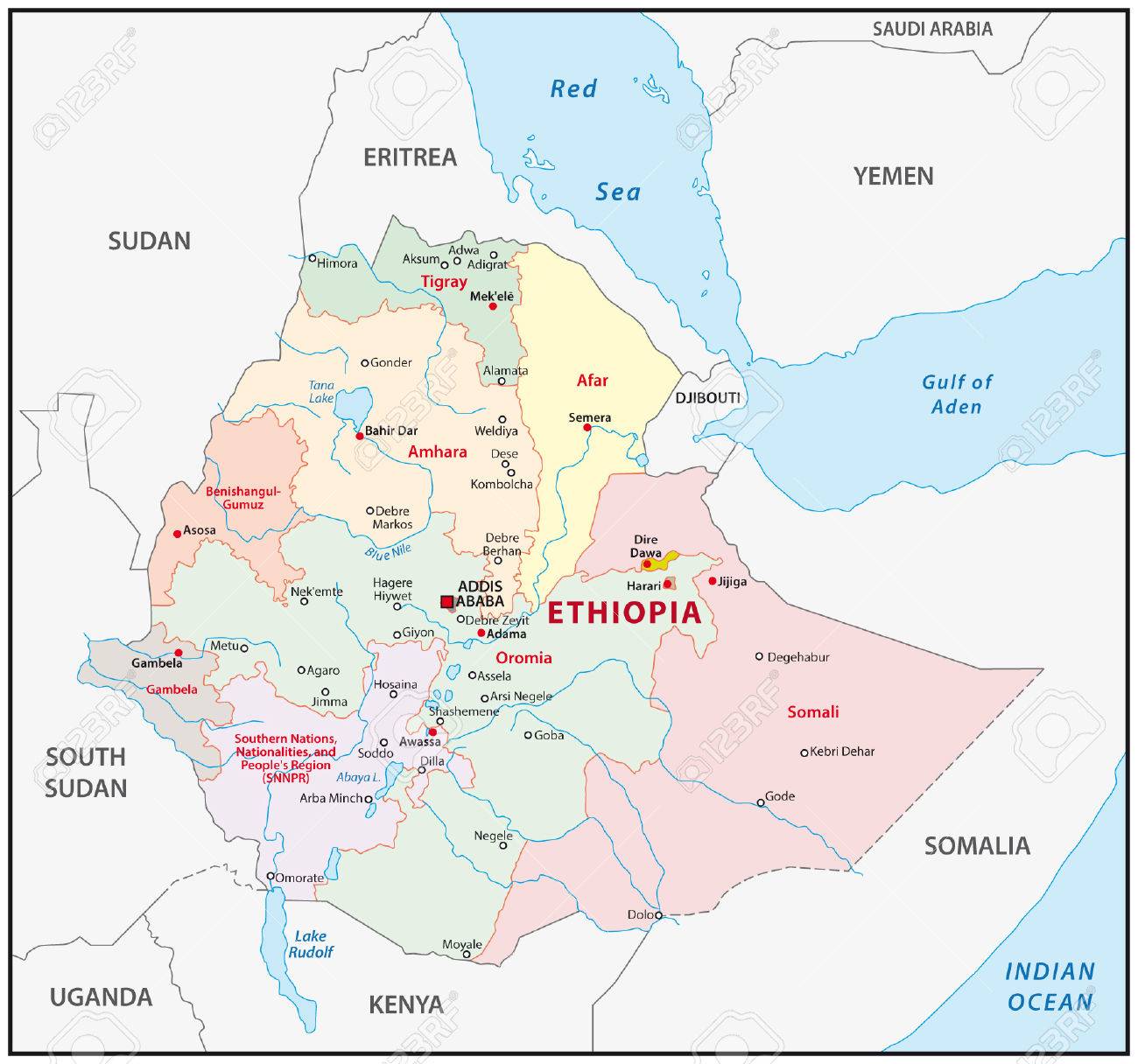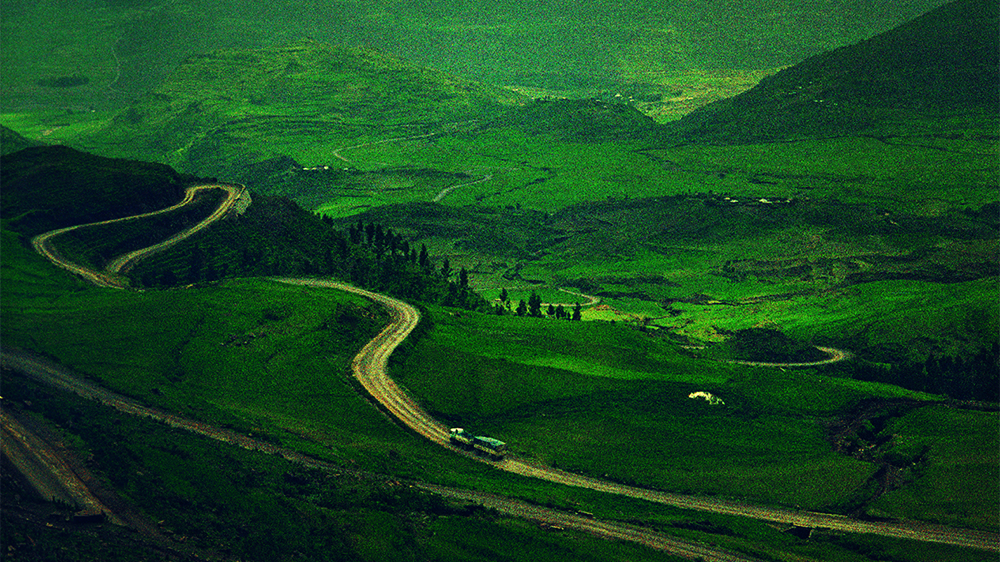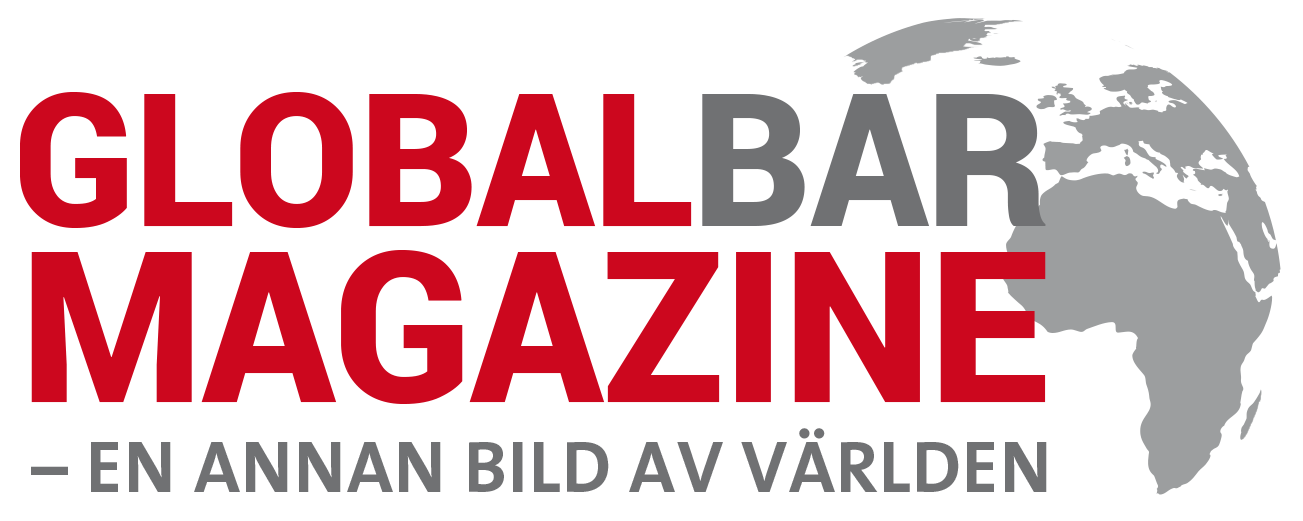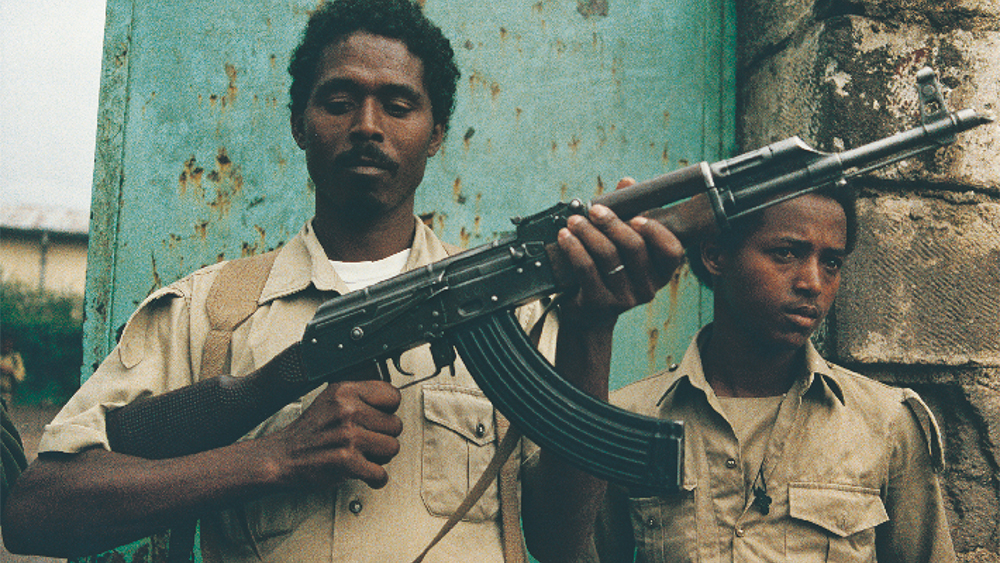An extensive war is currently raging in the Ethiopian Tigray province, with troops from the Ethiopian central government facing troops from the TPLF movement that previously ruled Ethiopia. If Prime Minister Abiy’s federal troops win the war, it could open the way for a more peaceful development in the region, writes Donald Boström. This is a translation of the article, originally written in Swedish.
A couple of weeks ago, the Ethiopian parliament declared war on the ethnic separatist TPLF (Tigray Liberation Front) movement, which governs the northern Ethiopian province of Tigray. The declaration came after a number of massacres, carried out by OLF-SHENE, which is a small faction within the Oromo Liberation Front, loyal to the TPLF.
After a nightly attack by TPLF on the so-called Northern Command of the federal forces, and its stockpile of long-range robots in which government soldiers were killed, the Prime Minister of Ethiopia announced that the TPLF had ”Crossed the red line”. Today, as the war enters its third week, government forces have taken control of all important places and cities. At the time of writing (November 24), only the provincial capital of Mekelle, with half a million inhabitants, remains under the power of TPLF. However, this is denied by TPLF’s supreme leader, Dr. Debresion Gebremichael, who was Deputy Prime Minister during the TPLF’s tenure in government. Since the federal government forces have taken over the other cities of the province, it is more than likely that Debresion is trying to maintain failing morale than anything else.
The first casualty
This is perhaps the only war that is without journalistic coverage, which leaves room for unchallenged propaganda from all sides. For those reasons, there is great uncertainty about the real state of affairs. Images from old conflicts are used in this propaganda war. A downed helicopter in Syria becomes a helicopter in Ethiopia, a burnt-out tank in Israel becomes a burnt out tank in Tigray etc. There are a number of events that both sides have confirmed, other information has leaked from residents in affected areas. But still, many details are missing. There is speculation about internal conflicts between the TPLF leaders, those who have fled, those who have been killed, and those who want to give up. And those who will never give up.
During its retreat, the TPLF has blown up bridges and dug up roads to block the advance of the federal forces, but without success. They have armed their population in various areas, with limited results as it looks, at least now. Prime Minister Abiy Ahmed wrote on Twitter that instead of firing on government forces, the residents of Shira collected weapons and gave them to Ethiopian government soldiers and that the residents of Adigrat captured militias and TPLF special forces, who remained hidden in the area and handed them over to the federal forces.
How much truth there is in the Prime Minister’s Tweet is hard to know. What can be noted, however, is that the TPLF separatists’ military successes have not been materialized and that they are being pushed back on all fronts. TPLF’s forces are now gathered in the provincial capital for the decisive battle. And it is obvious that TPLF misjudged the situation. Initially, the from the outset popular Ethiopian Prime Minister Abiy Ahmed had lost much of his support among many groups in the country due to recent events. The TPLF’s assumption was that a weakened Abiy Ahmed would not have much to oppose. But instead, the TPLF’s attacks have strengthened the Prime Minister, and gained him the support of both Parliament and other groups to counter the TPLF in the Tigray province.
A separatist election
A significant circumstance that brought the conflict to a decisive conclusion was that Ethiopia postponed the planned elections in September due to the Corona pandemic. Despite this, the TPLF conducted unilateral elections in the province of Tigray, which was immediately declared illegal by the Ethiopian government. When a new government was not installed in Addis Ababa on October 5, as a result of the cancelled elections, the TPLF stepped up the conflict again by declaring Abiys Ahmed’s central government illegal. The Ethiopian government responded by tightening the budget for Tigray and replaced the national currency with a new. The TPLF controlled billions lost their value. Of course, people, could be redeemed against the new currency to its value if a satisfactory explanation was given for how the money was acquired, knowing it could not always be done: the TPLF management is dragged with accusations that they have privately enriched themselves from the national the budget.On November 22, the Prime Minister of Ethiopia gave a speech to the Ethiopian nation where he announced another deadline of 72 hours in the war. Through leaflets, residents of Mekelle were urged to take shelter and stay away from buildings where the TPLF management can stay.
”We want to send a message to the public in Mekelle to save yourselves from any artillery attacks and free yourselves from the junta. After that, there will be no mercy,” said Ethiopian military spokesman Dejene Tsegayes, something critics said could be seen as a violation of international law.
At the same time, it is difficult to see how the TPLF’s ethnic nationalists could give up. They are not only fighting for their own lives, they are fighting for a Greater Tigray. It is one of the keys to understanding the conflict that is going on now.

The dream of a Greater Tigray
When the TPLF lost the grip of the government in April 2018, they withdrew to their province in the north with a significant portion of the country’s economic and military assets. Abiy Ahmed effectively stepped into office as the new prime minister and signed a peace treaty with archenemy Eritrea, and subsequently received the Nobel Peace Prize. In principle, all observers hoped that real peace between the countries would be possible after decades of conflict. In the peace euphoria that followed the accord, the civilian population of Eritrea handed in their weapons, and according to high-ranking Eritreans, it was decided that the unlimited National Service would be back to the originally eighteen months. Many observers had hoped that the new security situation would mean that political prisoners could hopefully be released. However, the TPLF declared from the north that there is ”no peace without the TPLF”. The Eritrean civilian population had reluctantly to retrieve their weapons and national service remained unlimited.
TPLF’s plans to break away from Ethiopia and proclaim its own state, the state of Tigray, go back a long way. It was only during the war against Ethiopia’s then-President Mengistu, that the TPLF in 1986 was persuaded by the Eritrean EPLF movement to abandon plans for its own separate state and become ”All Ethiopian” and march against the capital Addis Ababa, as they did in cooperation with the Eritrean Liberation Movement EPLF, where they took power in 1991. Although TPLF were the ruling party, governing Ethiopia, they continued to favour their own province. Over the years, the TPLF has received widespread criticism for its ethnic chauvinist policies, which have divided the country and led many to fear a ”Yugoslavia situation”. Diplomats in Addis Ababa notes that the issue of ethnicity is number one on the agenda today. However, during their years in power TPLF, went so far in this, that when I myself during that period went to The Ethiopian Mapping Agency Addis Ababa and bought an official map of Ethiopia, parts of Eritrea, Wollo and Gondar had been annexed to the Tigray Province. The dream of Greater Tigray and ethnic provincial nationalism remained alive within TPLF.
The TPLF leadership, who were so-called Albanian communists, paradoxically had the support of the United States during their years in power and thought they could expand their province into a kind of” internal imperialism” without reactions or protests. But everything has its time. When Ethiopia a few years ago was on the brink of ethnic, political collapse with widespread riots, economic bankruptcy and demonstrations against the TPLF regime, the United States, Saudi Arabia and the Emirates intervened, and in cooperation with Eritrea and Abiy Ahmed staged a plan in which the TPLF regime lost power after 27 years. TPLF withdrew to Tigray and heal their wounds, it was reported that TPLF bought weapons and that 70-80,000 young people were in military training. On Monday the 23 of November, TPLF leader Debretsion, called on Tigray’s youth to help TPLF to resist the federal government. On 14 November, TPLF fired missiles at Ethiopia and Eritrea in an attempt to make the conflict international, which did not succeed either. Three missiles aimed at the Eritrean capital Asmara and struck just before 8 pm. There was not an official or comments or statement from Eritrea. Not even in the evening news broadcast at 9 pm on Eritrean television, the attack was mentioned.
If the Central Government of Ethiopia can take control of the province of Tigray, Eritrea will get rid of its biggest threat and will be the big winner. The question is what role Eritrea is now playing in the war. Bellingcat reports on drones from the Arab Emirates that has been spotted on an Eritrean air base.
Eritrea has confirmed that they are standing ready with heavy artillery at the border. Personally, I’m sure that Saudi Arabia, the Emirates and Eritrea are giving their support to the Ethiopian government in different ways, because they – together with the United States – was the reason why TPLF lost power. On Monday, November 23, Ethiopia’s Minister of Justice, Gedion Timothewos, said that the TPLF’s attacks on the country’s military, on the Amhara group and on Eritrea could constitute treason and terrorism. Reuters reports that so far hundreds, perhaps thousands of people have died in the fighting and during airstrikes and that 40,000 people have taken refuge in Sudan.

Can there be peace now?
There are both good and bad scenarios as of what might happen next. If Abiy Ahmed and the federal forces take control of Tigray, as it looks at the time of writing, the region could have a peace that has not been possible since 1990. The major threat to the central government in Addis Ababa and Eritrea so far has been the TPLF’s plans for a Greater Tigray, which includes territories from both countries. After TPLF lost power in April 2018, nationalist rhetoric has been heard from TV broadcasts in Tigray, stating that Eritrea belongs to us, that Greater Tigray extends from the Red Sea to Axum etc. This harsh, nationalist rhetoric has gained some followers among the Tigray population. If peace can be achieved now, Eritrea can seriously demilitarize and the security situation can allow political prisoners to be released, something many hoped when the peace agreement between Eritrea and Ethiopia was sealed in April 2018.
Soon, Abiy Ahmed and the federal forces will apparently take control of Tigray Province. What is their plan to gather the people behind a united Ethiopia? If they succeed in that feat, the possibility for the remaining TPLF fighters to retake the province and bring to life the dream of a Greater Tigray will diminish. Another scenario, however, is that even if half of TPLF’s fighters are eliminated, the rest will remain well-armed and retreat into the mountains and continue the conflict that could create a Libyan development that ends with an Ethiopian turning into a de facto failed state.
What about Eritrea?
An issue that has not been mentioned so far is that a significant part of the Eritrean opposition is in, and is conducting its opposition to the ruling power in Eritrea, from the Tigray Province, in cooperation with the TPLF. Half of Eritrea’s border is towards Tigray. If the TPLF loses control of Tigray, it means that the Eritrean opposition will lose a significant base and a militarily strong partner. In cases opposition activist from Eritrea are caught by the federal forces, they may be arrested. This makes the issue more complex for some observers around the world, who on the one hand care for the opposition against Eritrea, and especially against President Isais Afwerki, while at the same time being well acquainted with the TPLF’s brutal warfare during their time in power. During the war in 1998-2000, TPLF exploited the children of other ethnic groups as soldiers in a major offensive against Eritrea. In that period, Ethiopia, under the leadership of the TPLF, invaded and bombed extensive civilian areas in Eritrea, resulting in nearly 100,000 dead and almost one million refugees in Eritrea. It was a war in which other ethnic groups had to bear the heaviest burden.
In this geopolitical game, therefore, some believe that the ethnic separatists in the TPLF’s leadership should be supported, so as not to risk weakening the Eritrean opposition. Others say that by supporting the Ethiopian government’s law enforcement campaign against the warlords in Tigray, it is creating the possibility of stability in the region that has not existed for decades and which, turn, could force reforms in Eritrea when there no longer exists an external enemy to blame. In any case, it is certain that the on-going military operation in Tigray will not resolve all the underlying contradictions that exist in Ethiopia. And soon Ethiopia will have to face Sudan and Egypt in the conflict regarding the giant reservoir project Grand Ethiopian Renaissance Dam (GERD / TaIHiGe), which will be filled within the next decade. If so, we have reason to return.
Donald Boström
Donald Boström is a Swedish writer, journalist and photographer. He has followed the development in place in Eritrea and Ethiopia since 1987.


